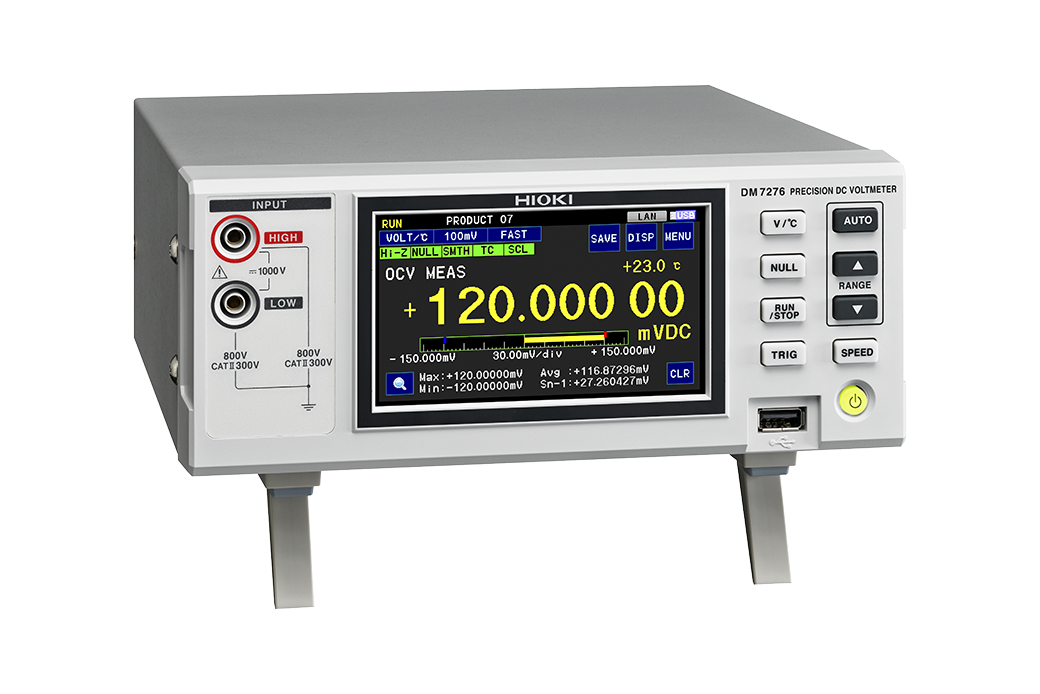What is Voltage?
What is voltage? This page offers an easy-to-understand explanation of how voltage differs from current, the units in which it is measured, and other information.
Overview
Before you start using electronic devices, you need to develop a good understanding of current, resistance, voltage, and related topics. If you’re like most people, you're familiar with the words but lack a detailed understanding of the underlying concepts. This page provides an easy-to-understand introduction that explores how voltage and other terms are defined, how current and electric potential differ, and how voltage can be measured.
What is voltage?
Voltage describes the “pressure” that pushes electricity. The amount of voltage is indicated by a unit known as the volt (V), and higher voltages cause more electricity to flow to an electronic device. However, electronic devices are designed to operate at specific voltages; excessive voltage can damage their circuitry.
By contrast, too low a voltage can cause issues, too, by preventing circuits from operating and making the devices built around them useless. An understanding of voltage and of how to rectify associated issues is necessary in order to handle electronic devices appropriately and identify the underlying issues when problems occur.
The difference between voltage and current
As introduced above, a simple description of voltage would be “the ability to cause electricity to flow.” If you’re like most people, you have trouble envisioning what voltage is since you can’t view it directly with your eyes. To understand voltage, you must first understand electricity.
Electricity flows as a current. You can imagine it as a flow of water, like in a river. The water in rivers flows from mountains upstream to the ocean downstream. In other words, water flows from places with a high water height to places with a low water height. Electricity acts similarly: the concept of water height is analogous to electric potential, and electricity flows from places with high electric potential to places with low electric potential.
Electricity resembles the flow of water.
The potential difference between two places can be expressed as a voltage. Voltage is the “pressure,” as it were, that makes electricity flow. In physics, voltage can be calculated using Ohm’s Law, which tells us that voltage equals resistance times current.
Resistance indicates the difficulty with which electricity flows. Imagine a water main. As the pipe grows smaller, resistance increases, and it becomes more difficult for the water to flow; at the same time, the strength of the flow increases. By contrast, as the pipe grows larger, water flows more readily, but the strength of the flow decreases. A similar situation applies to current. Resistance and current are proportional to voltage, meaning that as either increases, so too will voltage.

Method for measuring voltage
Multimeters (multi-testers) are used to measure voltage. In addition to voltage, multimeters can perform continuity checks and measure parameters such as current, resistance, temperature, and capacitance. Multimeters come in both analog and digital variants, but digital models are the easiest to use without mistakenly reading values since they display values directly.
To measure voltage with a multimeter, you connect positive and negative test leads and select a voltage measurement range. You then place the leads in contact with both ends of the circuit you wish to measure. When using an analog tester, you start with the largest voltage measurement range.
If the instrument does not respond, you then try progressively lower measurement ranges until you reach a range that can measure the circuit’s voltage. When using a digital tester, many models simplify the measurement process by adjusting the measurement range automatically.

The difference between direct and alternating current
You may know that there are two kinds of current: direct, or DC, and alternating, or AC. Direct current flows without any change in the direction or magnitude of the current or in the magnitude of the voltage. A familiar example of this type of current would be a battery. Batteries produce voltage and current in a single direction.
If you connect a miniature bulb to a battery, the bulb will generate a uniform amount of light as long as there’s power remaining in the battery, and that is a characteristic of direct current. Direct current flows in a flat or pulsating waveform.
 Example of DC waveforms
Example of DC waveforms
By contrast, alternating current is characterized by voltage and current whose direction and magnitude vary periodically relative to the zero position. A representative example would be the current supplied by household electrical outlets. The voltage and current vary with a set rhythm in the manner of a sine wave, triangular wave, or pulse wave.
 Example of AC waveforms
Example of AC waveforms
A DC circuit must be connected to the battery’s positive and negative terminals in the proper manner. Some circuits won’t operate properly if the battery is connected backwards.
But with a household electrical outlet, electricity will flow even if you reverse the left and right prongs of the plug. Since electricity in an AC current flows in both directions, the magnitude of the electricity varies moment by moment. These values are known as instantaneous values, and they can be described by values such as the maximum value, minimum value, average value, peak-to-peak value, and RMS value.
Use a multimeter when you need to measure voltage.
Voltage is an indicator of the ability to move electricity. The concept is closely related to other concepts such as potential difference, current, and resistance, so it's important to develop an overall understanding of the subject. To measure voltage, you’ll need a multimeter. Multimeters are easy to use, so be sure to utilize them when you need to measure voltage.
How to Use
- How to use digital multimeters (DMMs) properly and how to choose a safe multimeter
- Using and function of digital multimeters








